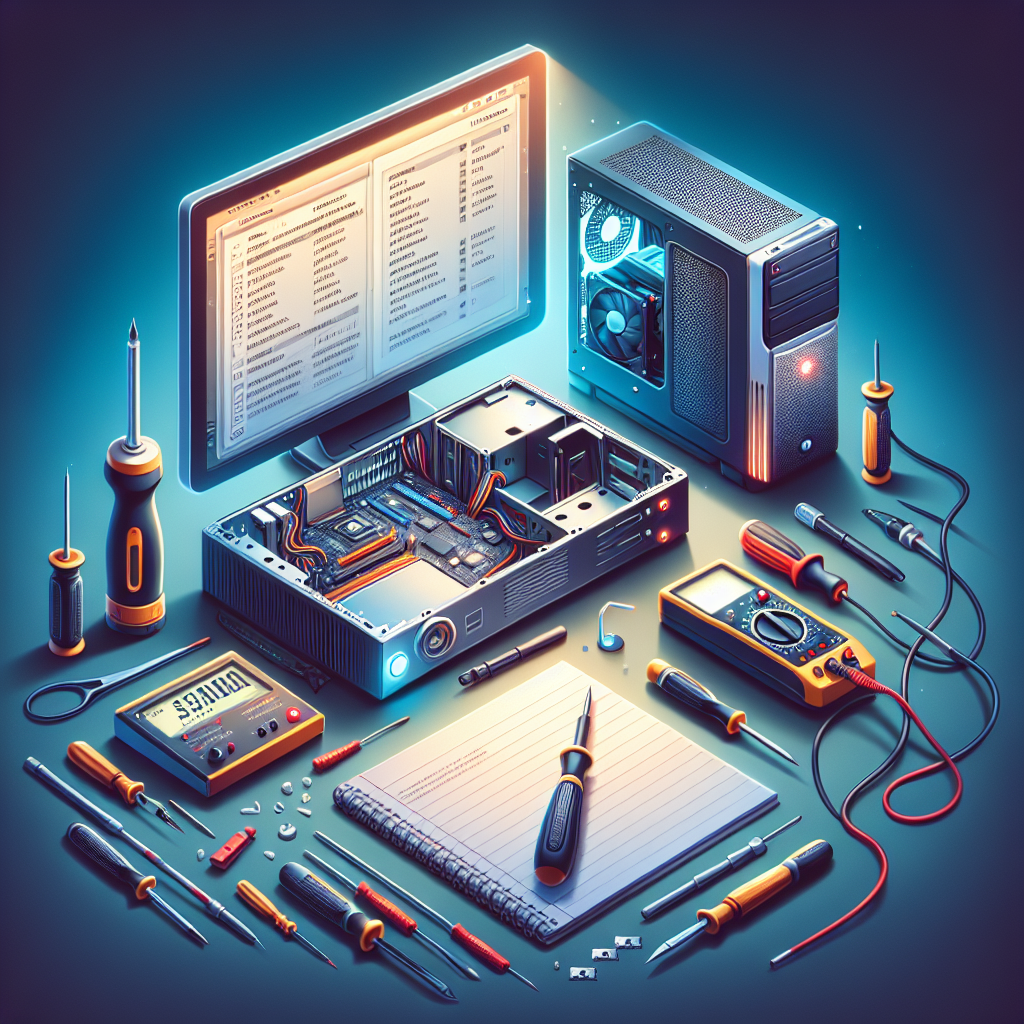Computers are remarkable machines that have become integral to our daily lives. However, like all technology, they can encounter issues that hinder their performance. Diagnosing these problems can seem daunting, but following a systematic approach helps simplify the process. This article offers a step-by-step guide to diagnosing common computer problems, equipping you with the tools to identify and potentially fix issues on your own.
Step 1: Identify the Symptoms
Before delving into the possible causes, it’s essential first to note the specific symptoms your computer is exhibiting. Take note of the following:
- Error Messages: Are you seeing any specific error messages? Write them down.
- Unusual Noises: Is your computer making any strange sounds, like beeping or grinding?
- Performance Issues: Is your computer freezing, crashing, or running slowly?
- Hardware Issues: Are there any problems with peripherals such as the keyboard, mouse, or monitor?
- Network Problems: Is there difficulty connecting to the internet?
Step 2: Check the Physical Connections
Often, hardware malfunctions stem from simple connection issues. Here are a few things to check:
- Power Supply: Ensure that your computer is plugged in and that any power strips are functioning.
- Cables: Secure all cables—especially those connected to the monitor, keyboard, and mouse.
- Peripherals: Disconnect and reconnect USB devices, printers, or additional monitors.
- Overheating: Check if the vents are blocked or if the fans are not working correctly. Overheating can cause performance issues or sudden shutdowns.
Step 3: Restart Your Computer
Restarting is a powerful yet often overlooked step in troubleshooting. It can clear temporary files and free up system resources. If you have applications running, ensure you save your work before rebooting.
- Soft Reset: Use the Restart option in your operating system.
- Hard Reset: If the computer is unresponsive, press and hold the power button until it shuts down, then reboot.
Step 4: Check for Software Issues
Software-related problems can often be diagnosed with a few basic steps:
- Update Software: Ensure your operating system and applications are up to date. This includes drivers, which can cause hardware malfunctions if outdated.
- Safe Mode: Boot your computer in Safe Mode. This starts the computer with minimal drivers and can help isolate issues. If the problem doesn’t occur in Safe Mode, it may be a software conflict.
- Antivirus Scan: Run a full system scan to rule out malware or viruses.
Step 5: Assess the Hardware
If software checks seem to not be the issue, it’s time to look deeper into the hardware:
-
Test Components: If you suspect it might be a hardware issue, such as the RAM or hard drive:
- RAM: Use diagnostic tools like Windows Memory Diagnostic or MemTest86.
- Hard Drive: Check for errors using tools like CHKDSK (Windows) or Disk Utility (Mac).
- Graphics Card: If you’re having display issues, try switching to onboard graphics if available.
- Visual Inspection: Open the case (if you’re comfortable) and examine connections to the motherboard, as well as look for any visible signs of damage such as burnt components.
Step 6: Review System Resources
Use built-in resource monitoring tools to check CPU and memory usage:
- Task Manager (Windows): Access it by right-clicking on the taskbar or pressing Ctrl + Shift + Esc. Check for processes consuming excessive resources.
- Activity Monitor (Mac): Use this to examine CPU, memory, disk, and network usage.
If specific applications are causing high resource usage, consider closing them or reinstalling.
Step 7: Seek Online Support
If all else fails and the problem persists, online forums and support communities can be invaluable resources. Websites like Reddit, Stack Overflow, and tech-specific forums often contain answers to common problems. When posting your issue, provide as many details as possible, including:
- A description of the symptoms
- Steps taken to resolve the problem
- Hardware specifications and software version
Step 8: Consult a Professional
If diagnosing and fixing the issue feels overwhelming, or if you’ve ruled out all possible causes, it may be time to consult a professional.
- Local Repair Shops: Look for reputable computer repair services. Reading reviews can help ensure quality service.
- Manufacturer Support: For devices under warranty, contact the manufacturer for support.
Conclusion
Diagnosing computer problems is a vital skill in today’s tech-saturated environment. By following the steps outlined above, you can systematically identify and potentially resolve issues that may arise. Remember, if you ever feel unsure, seeking professional help is always a viable option.
FAQs
1. How can I determine if my computer problem is hardware or software-related?
- If your computer won’t boot or has visual artifacts on the screen, it’s likely a hardware issue. Conversely, if it runs but applications crash or are slow, the problem may be software-related.
2. What should I do if my computer keeps crashing?
- Start with a virus scan, check for software updates, and assess heat levels. If the issue continues, delve into hardware inspections.
3. How do I perform a factory reset on my computer?
- The process differs based on operating systems, but generally, there are options in the settings menu to restore factory settings. Be sure to back up important data before proceeding.
4. Is it worth upgrading old hardware instead of buying a new computer?
- It can be cost-effective depending on the problem. Upgrading RAM or switching to an SSD can enhance performance, but if the motherboard or other critical components are outdated, a new computer may be a better investment.
5. Can I diagnose problems without technical knowledge?
- Yes! Follow the step-by-step guide provided. Many issues can be resolved by checking connections and updating software. For complex issues, seek help from professionals.


